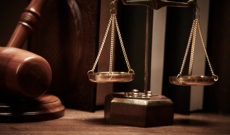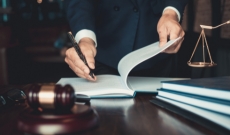Trademark Issues in Cyberspace- An Analysis
Trademark Issues in Cyberspace
1. Introduction
The rise of the internet and e-commerce has blurred geographical boundaries, enabling trademarks to be used, misused, and disputed across jurisdictions.
Trademarks in cyberspace face unique challenges, especially with domain names, cybersquatting, and cross-border infringement.
Trademark law, traditionally territorial, struggles to regulate activities in the global digital environment.
2. What is a Trademark?
A trademark is a distinctive sign, symbol, name, or logo used by a business to distinguish its goods/services from others.
It serves to protect brand identity, reputation, and consumer trust.
3. How the Internet Affects Trademarks
Trademarks can be used on websites, domain names, digital ads, and social media.
This creates potential for:
Infringement
Misrepresentation
Loss of distinctiveness
Global disputes over ownership and use
4. Key Trademark Issues in Cyberspace
A. Cybersquatting
Registering domain names that are identical or confusingly similar to well-known trademarks, with the intent to sell them for profit.
Example: Registering tataelectronics.com without authorization and offering to sell it to Tata Group.
Regulated by:
ICANN’s UDRP (Uniform Domain-Name Dispute-Resolution Policy)
Indian IT Act (Section 66) + Trademarks Act (1999)
B. Typosquatting
Registering misspelled versions of popular domain names to mislead users.
Example: "gooogle.com" instead of "google.com"
C. Meta Tag Infringement
Using a competitor’s trademark in website HTML meta tags to divert search traffic.
May mislead consumers and cause “initial interest confusion.”
D. Keyword Advertising / Search Engine Infringement
Using trademarks as keywords in online advertising (like Google Ads).
Can lead to trademark dilution or misrepresentation.
Mixed global rulings — some jurisdictions allow it, others see it as infringement.
E. Social Media and Username Squatting
Using trademarked names in social media handles to deceive or exploit the brand’s identity.
Platforms like Twitter, Instagram, etc., have policies, but legal enforcement is limited.
F. Jurisdictional Challenges
Online trademark violations are often cross-border, making enforcement and adjudication difficult.
Example: A website hosted in the USA using an Indian trademark — which country’s law applies?
5. Legal Framework (India)
Trademarks Act, 1999:
Protects registered and unregistered trademarks.
Section 29 – Defines infringement.
Section 135 – Provides remedies like injunctions, damages, etc.
Information Technology Act, 2000:
Addresses some cyber-related offences, including misuse of digital identities.
Domain Dispute Resolution:
IN Registry (India’s ccTLD) – Follows INDRP (Indian Domain Name Dispute Resolution Policy).
ICANN-UDRP – Global mechanism for resolving domain name disputes.
6. Notable Case Laws
Yahoo! Inc. v. Akash Arora (Delhi HC, 1999)
Held: Using “YahooIndia” domain name amounted to passing off.
Court protected Yahoo!’s mark even though not registered in India.
Rediff Communication Ltd. v. Cyberbooth
Held: Domain names are like trademarks; using “radiff.com” was passing off.
Satyam Infoway Ltd. v. Sifynet Solutions (SC, 2004)
SC held domain names as business identifiers deserving equal protection as trademarks.
7. Remedies Available
| Legal Remedy | Description |
|---|---|
| Injunction | Stop unauthorized use or misleading domain/mark |
| Damages or Account of Profits | Monetary compensation for losses |
| Domain name transfer | Through UDRP or INDRP proceedings |
| Take-down Orders | For websites, ads, or social media violating trademarks |
8. Challenges in Enforcement
Anonymity of cyberspace users
Lack of harmonized global laws
Fast-changing technologies
High cost and time for international dispute resolution
9. Conclusion
Trademark protection in cyberspace is essential for preserving brand integrity and consumer trust.
Existing laws are being adapted, but there is a pressing need for global cooperation and stricter mechanisms.
Businesses must proactively register their trademarks and domain names, monitor online usage, and seek remedies when infringed.
✅ Quick Recap Table
| Issue | Explanation | Legal Protection |
|---|---|---|
| Cybersquatting | Registering domains in bad faith | UDRP / INDRP / Trademarks Act |
| Meta Tag Use | Using trademarks in page metadata | Infringement if misleading |
| Keyword Ads | Trademark in paid ads | Jurisdiction-specific outcomes |
| Social Media Abuse | Fake handles/usernames | Platform policies + brand protection |
| Cross-border Jurisdiction | Global misuse of trademarks | Complex enforcement |
Do write to us if you need any further assistance.


















0 comments